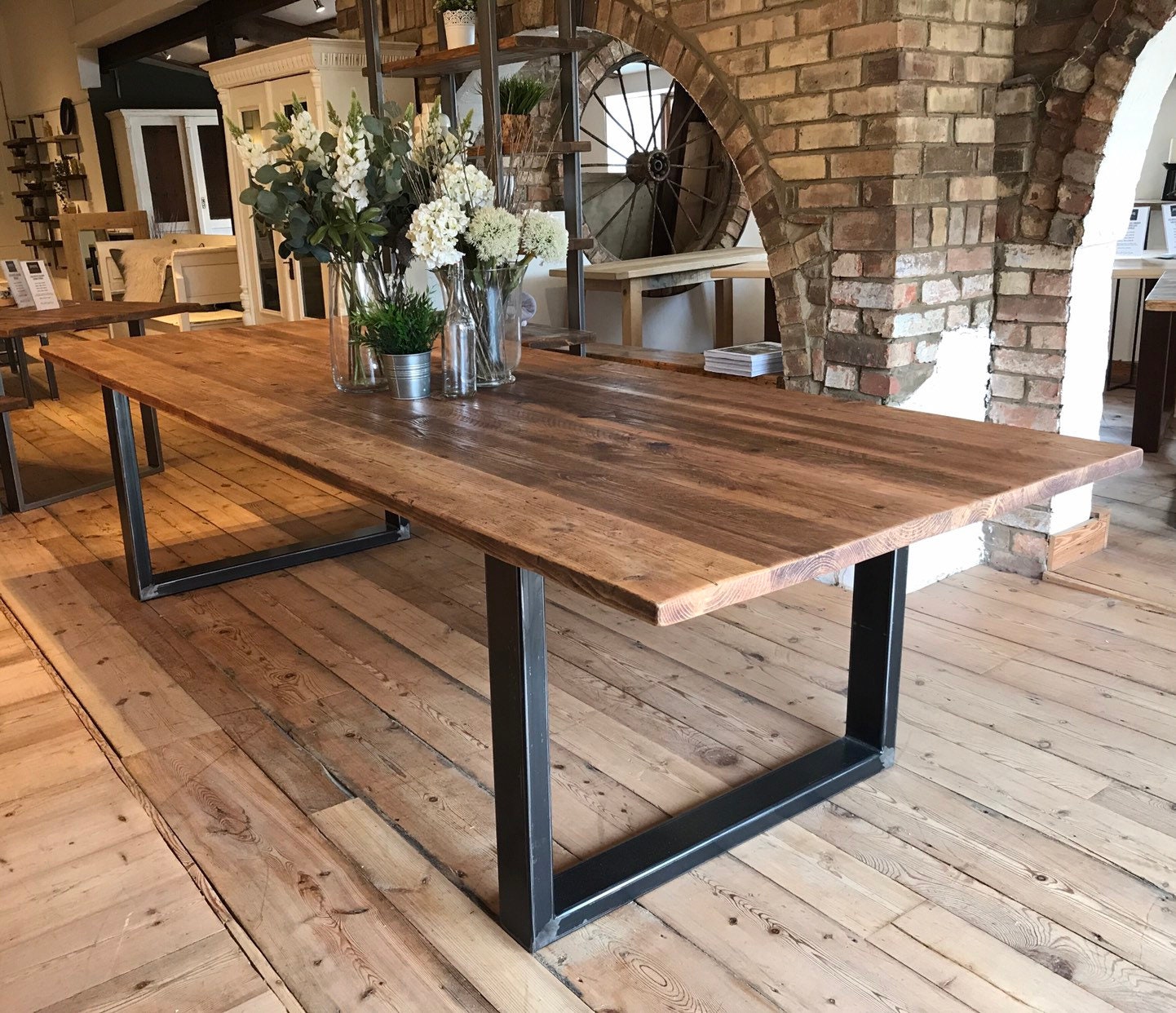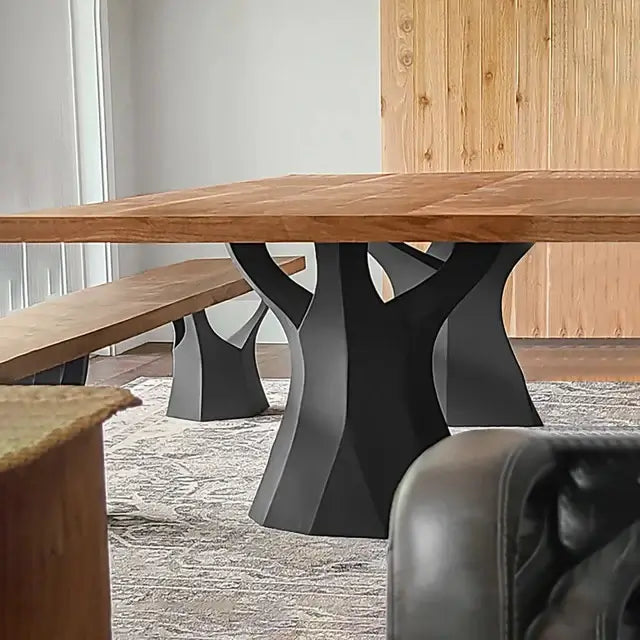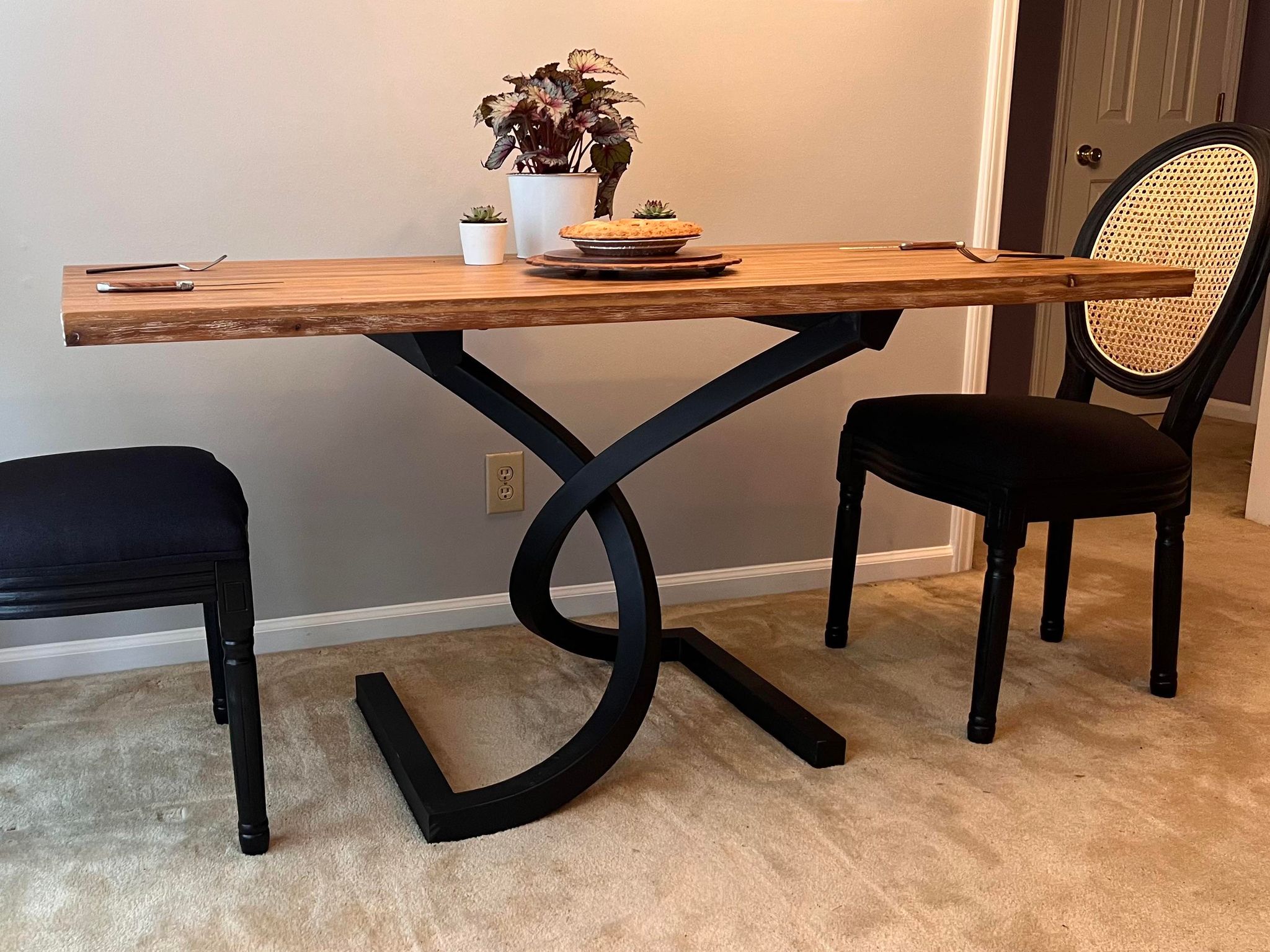Change Your Furnishings with Premium Dining Table Legs Wood Options
Change Your Furnishings with Premium Dining Table Legs Wood Options
Blog Article
Discovering the Different Sorts Of Dining Table Legs Timber for Your Eating Area
The option of dining table legs wood can exceptionally impact both the aesthetic and useful top qualities of your dining room. Solid timber choices, such as oak and walnut, give a traditional appearance with unrivaled resilience, while crafted timber alternatives use innovative designs that imitate the splendor of all-natural grains.
Solid Wood Options

Unlike crafted products, strong wood is less susceptible to warping and damage over time when correctly preserved. Each piece of solid wood is unique, showcasing individual attributes that include to the beauty and personality of the eating table.
In addition, strong timber can be completed in many methods, ranging from natural oils to stained finishes, permitting homeowners to personalize their furniture to match their style. In recap, picking solid timber for eating table legs not only guarantees structural honesty yet also boosts the aesthetic charm of the dining location, making it a rewarding financial investment for any type of home.
Engineered Wood Alternatives

Plywood, created from several layers of wood veneer, is specifically solid and stable, making it a superb selection for eating table legs. Its layered composition permits it to endure changes in moisture and temperature far better than standard strong wood. MDF, on the various other hand, provides a smooth surface area for painting or veneering, making it possible for designers to attain a polished appearance while maintaining architectural integrity.
When picking engineered wood alternatives, it is crucial to consider the intended use and desired aesthetic. These materials not only improve the performance of eating areas however additionally permit for better layout adaptability, making certain that modern and traditional designs can exist side-by-side sympathetically.
Reclaimed Timber Includes
Recovered timber uses a special blend of sustainability and character, making it a progressively prominent choice for eating table legs. Sourced from old barns, manufacturing facilities, and various other structures, recovered timber symbolizes a background that new products merely can not reproduce. Each item brings its own tale, noted by distinctive flaws, knots, and varying grain patterns, which add to a table's one-of-a-kind visual charm.
Along with its aesthetic appeal, recovered wood is an environmentally pleasant choice. By repurposing previously used products, it decreases the demand for brand-new lumber, therefore helping to reduce and conserve woodlands waste. This aligns with an expanding consumer preference for lasting practices in home furnishings.
In addition, redeemed wood is frequently more long lasting than newly collected wood as a result of its age. The all-natural drying procedure that reclaimed timber undergoes lead to a denser and more powerful product, making it much less prone to warping and splitting. This boosts the longevity of eating tables, allowing them to hold up against the rigors of everyday use.
Softwood vs. Wood
When picking dining table legs, comprehending the differences in between softwood and wood is essential for attaining both functional and visual goals. They generally display a more rustic look, making them appropriate for casual or country-style eating rooms.
On the various other hand, woods, sourced from deciduous trees like oak, maple, and cherry, are renowned for their density, toughness, and durability. The intricate grain patterns and rich colors of hardwoods provide Dining Table Legs Wood a advanced and timeless charm, making them perfect for formal dining setups. While woods tend to be a lot more expensive and heavier, their resilience versus damage frequently warrants the investment.
Ultimately, the option between softwood and wood for eating table legs need to line up with your design vision, usage needs, and budget, making sure that your dining room shows your individual design while continuing to be functional over time.

Therapies and finishes
The aesthetic allure and long life of table legs can be significantly improved with various surfaces and therapies. These processes not just safeguard the timber from damages but also raise its look, allowing it to complement varied interior designs.
One typical treatment is tarnishing, which passes through the timber and improves its all-natural grain while adding color. Stains give a rich, stylish appearance, making it possible for house owners to match their furniture with existing decoration. On the other hand, clear coatings such as polyurethane or varnish produce a protective layer without modifying the wood's original tone, guaranteeing durability versus wear and tear.
Additionally, all-natural oils, like tung or linseed oil, nurture the wood and supply a subtle sheen, all while being environmentally friendly. These oils allow the surface to take a breath, stopping moisture buildup and prospective bending.
For those looking for a rustic appeal, weather-beaten or distressed finishes can be used to produce an aged appearance, adding character to the item. Inevitably, the choice of coatings and treatments depends on personal choice, preferred aesthetics, and the certain timber kind, making it vital to take into consideration these aspects when picking eating table legs for your room.
Conclusion
Strong timbers, crafted choices, and recovered alternatives each offer unique benefits, catering to numerous preferences and needs. Inevitably, the option of timber kind should line up with wanted style, sturdiness, and ecological factors to consider, improving the general find this dining experience.
The selection of eating table legs wood can exceptionally influence both the visual and functional top qualities of your dining space - Dining Table Legs Wood. Strong wood options, such as oak and walnut, offer a traditional appearance with unrivaled helpful hints toughness, while crafted wood alternatives provide ingenious styles that imitate the splendor of natural grains. Solid wood uses a classic top quality that can elevate the overall design of an eating room. Each item of solid wood is distinct, showcasing specific features that include to the appeal and character of the eating table
Additionally, redeemed wood is commonly much more long lasting than recently collected timber due to its age.
Report this page